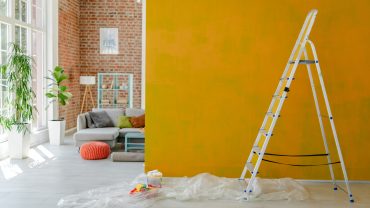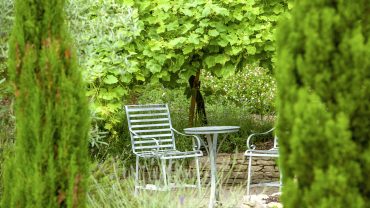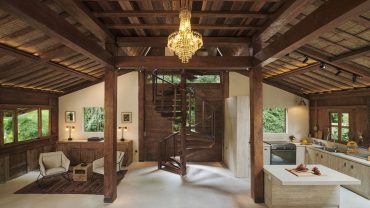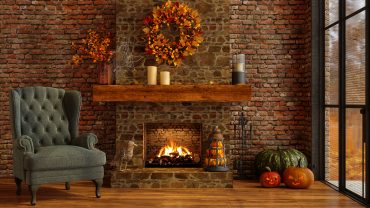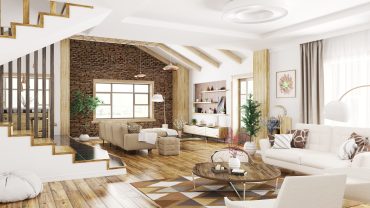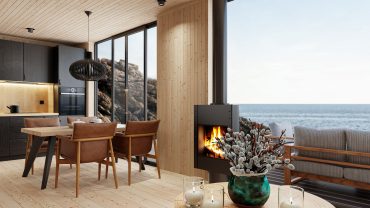The beauty of blending retro and vintage home decor with contemporary design lies in its ability to create a fascinating conversation between the past and the present. It’s a celebration of history, rich textures, distinctive patterns, and a vibrant palette of colours that give your home a unique personality. By seamlessly integrating retro themed decor, you’re not just creating a look, you’re telling a story.
As we delve into the realms of vintage home decor and retro interior design, we’ll explore why this style continues to captivate. We’ll unearth the elements that make up the artful dance of old and new, giving you some time-honoured tips to create a living space that is not just aesthetically pleasing, but also narrates a tale of style and sophistication. Let’s take a journey back in time to bring the elegance of yesteryear to the forefront of modern design.
What is Retro Decor?
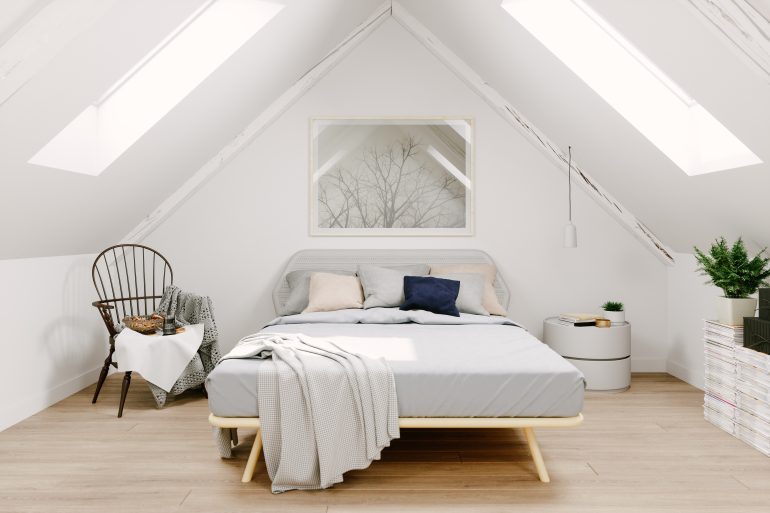
Interior of a Scandinavian style attic bedroom. (Credit: imaginima via Getty Images)
That is an interesting question with a multitude of answers. Indeed ‘retro home decor’ covers a plethora of styles and tastes. It can range from eighteenth century oak and mahogany Georgian antiques and mid-century style, all the way to fun and colourful 50s and 60s retro kitsch.
To muddy the waters even further, retro interior design is somewhat of a catch-all term which is continually evolving and can accommodate some of all of the following styles –
Minimalism: The design and lifestyle philosophy that emphasises simplicity, functionality, and reduction of excess, focusing on the essentials to foster a sense of clarity and tranquillity.
Scandinavian: Focusing on comfort with clean lines, simplicity and functionality at its core. This is a very popular style of retro decor.
Industrial: A retro interior design style that embraces rawness and utilitarian features. It often highlights structural elements, and uses materials like exposed brick, metals, and reclaimed wood to create an aesthetic reminiscent of old factories and industrial spaces.
Modern Glamour: Think 50s Hollywood siren with a nod to the Art Deco movement. It’s all about decadent design and luxurious fabrics and furniture.
Not all styles of retro themed decor go together, so it’s down to you to discover what works and what doesn’t. Are you one for ornate fabrics and big, heavy furniture or do you prefer simple, clean lines and natural earthy tones? Or perhaps you want your home to be a mix of 60s American diner and mediaeval gothic.
Before, After, Bridge - Balancing Old and New

Kitchen with wooden and white elements, balancing modern and retro (Credit: CreativaStudio via Getty Images)
Too much and you risk chaos and confusion. Too little and rooms can look cold and empty. The key is in how you balance styles and curate a space that’s interesting and coherent.
In incorporating vintage home decor or retro interior design into a home, the marketing concept of Before-After-Bridge, or BAB, is a useful method to follow.
Before – The current state of a room or home.
After – The potential of the room or home after a redesign.
Bridge – The design process and elements that will transform the ‘Before’ into the ‘After.’
Before – Understand the Space You Have
What type of room do you have? Identifying an overriding theme or style of your space is a great starting point.
Do you have any architectural features such as fireplaces or beams you’d like to incorporate into your retro interior design?
What about colours? Do you have a dominant colour palette you can use as a base for your choices of fabrics, curtains, or accessories?
After – Your Perfect Room Inspired by Retro Home Decor
Tactile Textiles: Vintage home decor is incomplete without the contrast of different fabrics, from animal print to thick rugs and floral accessories, strong colours can help to counteract earth-toned walls and carpets.
Mix and Match: Different styles of furniture often blend well together. Vintage armchairs pair well with contemporary units or a chrome and glass dining table can often be complemented with farmhouse chairs. Furniture of different scales or sizes can also work extremely well. Create a strong focal point to the room and work around it with interesting accent pieces.
Bright Lights, Big Picture: When it comes to retro decor, lighting and reflection is one of the classic ways to combine old and new. Vintage pendant or opaline lights or a full-on Tiffany-inspired Art Nouveau chandelier can contrast beautifully with modern or mid-century furniture with clean lines. In the same way, an ornate gilt overmantle mirror is a great way to reflect light and adds character to a room.
Upcycling: A great – and sustainable – way to breathe new life into old or worn furniture is to paint old dressers or cabinets in bright colours and add fun or interesting handles to drawers or cabinets. Reupholstering old sofas and armchairs with modern or colourful fabric is one of the highlights of retro themed decor and gives you a focal point and a place of interest to rest your eyes.
Bridge – How to Get From B(efore) to A(fter)
There are lots of ways to get from where you are to where you want to be and the beauty of retro interior design is that you’ve never got the finished article. There will always be something else to do. Something you’d like to change. Something that doesn’t sit quite right you’d like to move to another part of the room. Here are a few tips to bridge your current space with your ideal vision…
- Ensure your colours complement each other and use pops of brighter hues to break up the view;
- As we said before, too much of one thing or another can be confusing. Try and strike a balance. It may require a little trial and error but you’ll get there in the end;
- Accessories are as important as your statement pieces. Vases, picture frames, wall or floor art, and lighting are the real stars of the show;
- Tell your own story. Family trinkets, heirlooms, photographs or souvenirs help to infuse your space with your unique personality.
Where retro decor is concerned, there are no strict rules. It’s all about what you like and what works in your home. Have fun experimenting with colours, textures, lighting or furniture and you’ll create a timeless living space that’s balanced and harmonious and as unique as you are.




